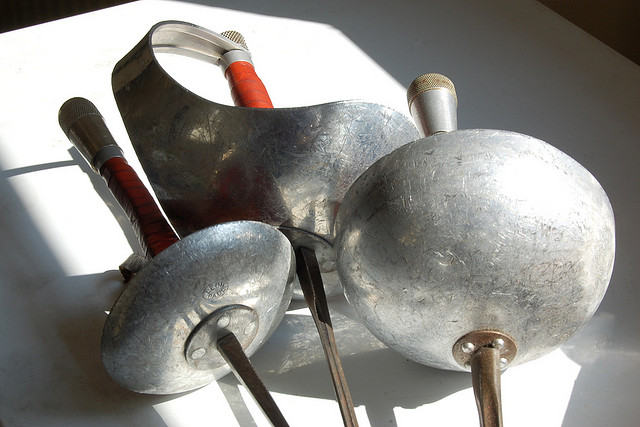
The materials used were:
(1) roll, 304 SS Mesh, 5’X100.5′
(2) 1/8X1.25″ steel bars
(2) 1/8X2.0″ steel bars
(6) tubes JB Weld (6 steel, 6 activator)
Approx 40 #8×2″ (or #10?) wood screws
(5) S hooks
(1) steel circle
Staples
50′ coil of rope
Heavy duty wire ties
My car jack
some wood and nails
The process:
The SS mesh roll we received was 100.5′, and to overlap the 2×4 sleepers in our floating floor, we cut 2 lengths 50’2″. On the first strip, we used the 1/8×1.25″ steel bars (2″ on second strip), and JB welded one bar to each end of the length of mesh using 1tube steel/activator for each bar. These bars would be used to secure the strip ends to the floor. (see photo)
After letting the JB Weld cure overnight, we drilled holes for the anchor screws, about 10 on each end, in each bar. One end of each strip was also drilled with extra holes, closer to the edge, to connect our tensioning system. The “static” end was then secured to the floor with 2″ wood screws after aligning with the existing strip lines.
I came up with this “wacky” S hook and metal ring tensioning system (see photo) using my car jack and some rope, hoping that the fact that the rope could “slip” along the ring would help even out the tension on each S hook pull point. It actually worked really well, wasn’t that dangerous, and was able to tension the strip ALOT pulling against the edge of our raised floor. There is virtually no movement along the strip length.
With the strip still under tension, the other metal bar is screwed to the floor, and the edges of the strip were stapled, about every 2″, while “combing” the width of the strip down with a 2’X4′ piece of 3/4 particle board. It’s very difficult to pull the strip along its width, and this was the best I could come up with. It seemed to work OK, and the strip lies very flat. Only after all stapling was the tension removed.
Things that were different than anticipated, or were changed:
-The mesh is much stiffer than I thought it would be, which was actually good.
-Used a wider bar on the 2nd strip, as the 1.25″ bar flexed under the tensioning, with correspondingly more JB weld
-The roll of mesh came with 1 defect, a hole about dime size near the 2nd strip center line edge, which had to be patched. We cut a patch out of extra material, and stapled it to the floor before placing the strip on top. A patch on top would have been uneven, and this seemed a good solution, since we don’t have the ability to weld stainless steel.
-One strip has been down about a month, without and complaints or damage. The other only a week.
-You can see the existing strip lines through the mesh
Total cost was about $925-950 for 2 complete grounded strips. $725 for the mesh, the rest for the above mentioned bars, screws, etc.
